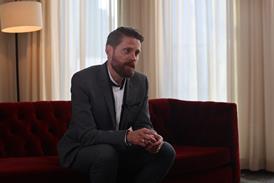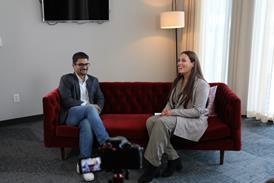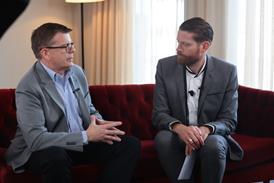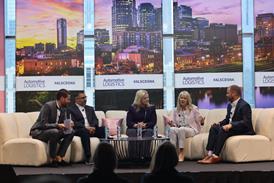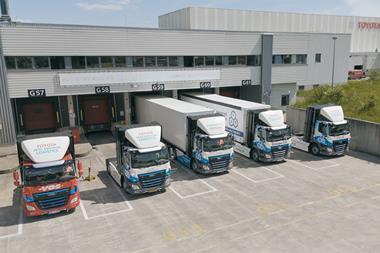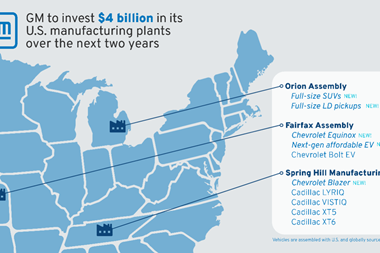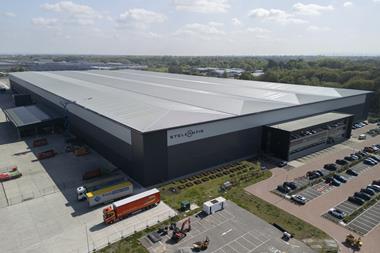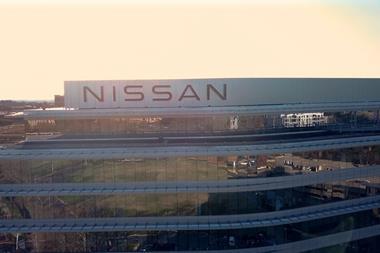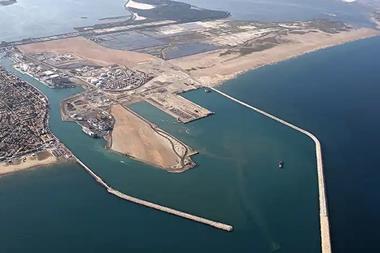In a shake-up of its US east coast vehicle import operations, Hyundai-Kia is switching its port of entry to Philadelphia, Pennsylvania. Glovis of America, the Korean carmaker’s logistics affiliate, together with the Philadelphia Regional Port Authority (PRPA) and Holt Logistics Group, announced the deal last week, saying the port will import and handle around 150,000 units annually starting this spring. The move will consolidate Hyundai-Kia’s east coast operations, which previously passed thr...
In a shake-up of its US east coast vehicle import operations, Hyundai-Kia is switching its port of entry to Philadelphia, Pennsylvania. Glovis of America, the Korean carmaker’s logistics affiliate, together with the Philadelphia Regional Port Authority (PRPA) and Holt Logistics Group, announced the deal last week, saying the port will import and handle around 150,000 units annually starting this spring.
The move will consolidate Hyundai-Kia’s east coast operations, which previously passed through both the ports of New York/New Jersey, as well as through Baltimore, Maryland.
Philadelphia will handle new cars for the first time in more than ten years, according to the port, when Volkswagen last used the port.
The car carrier vessels will arrive at the Packer Avenue Marine Terminal, a large container terminal leased by the PRPA to the Holt Logistics Group. The cars will then be driven across the road to a vehicle finishing facility at the port’s Pier 98 Annex, which is currently undergoing upgrades and should be operational for car processing by June. The operations will also be spread over around 85 acres, including two other areas at the port, Whiskey and Savage Yard.
About 100 vessels a year are expected to arrive at the port, according to the PRPA, mostly from South Korea. After making several stops along the west coast, as well as the port of Brunswick, Georgia, vessels will cross the Delaware Bay before sailing farther north and inland to Philadelphia up the Delaware River.
The shipping lead-time compared to New York is longer, while shorter than Baltimore, according to Robert C. Blackburn, senior deputy executive director for the PRPA. However, the real advantage for Glovis is that the stevedore union, the International Longshoreman’s Association, offers 19 different start times for working on the ship, where as the port of New York/New Jersey offers only five.
“That means that ship can begin being unloaded almost as soon as it arrive in Philadelphia, while in New York it may get there sooner but have to wait,” he told Automotive Logistics News.
After unloading, the vehicles will leave mostly by truck, according to Blackburn, with only some rail. Pier 98 Annex has several rail spurs, he said, including for Norfolk Southern and CSX.
A complex contract
The deal underlines the complexity involved in setting up such an operation, which includes nearly ten separate stakeholders. The process began in October 2009 when the PRPA, which owns the port, set up an agreement with Philly Ro-Ro Partners, a development company, to lease Pier 98, Whiskey and Savage yard. Philly Ro-Ro then came to an agreement to sublease the facilities to Glovis.
Glovis, meanwhile, awarded the management of the terminal to Global Auto Processing Services, which also manages a vehicle terminal at California’s Port Hueneme, and performs services such as pre-delivery inspection, storage and repairs.
Greenwich Terminals, owned by Holt Logistics, is the leasehold company for the Packer Avenue Marine Terminal and will provide the stevedore labour for unloading vehicles from vessels. That labour will be partly drawn from the International Longshoreman’s Association Local 1291, the members of which will drive the cars from the terminal to the vehicle facility at Pier 98, from which points members of Teamsters Local 107 will process and finish the cars.
According to the Philadelphia Inquirer, the deal had been held up over negotiations with the Teamsters, but Blackburn said all agreements are now in place and the terminals should be working by early June.
The port authority has said it will make up to $1m in capital improvements while Philly Ro-Ro Partners will contribute $3.7m. The terminal will include facilities for washing and finishing the vehicles.
Blackburn said that the port has sufficient capacity for the 150,000 units expected per year, but that it was actively pursuing more land. He revealed that Glovis also has an agreement with Norfolk Southern for around 40 acres of space separate from the port authority.
Blackburn did not rule out the potential of other carmakers using the port in future, however he said that Glovis would remain the current focus. Extra space that the port is currently in the process of acquiring just south of the Packer terminal is likely to be developed for containers, he maintained. “But there is the possibility that some of that land could used for more automobiles,” he said.
Not afraid to change
The deal comes as Hyundai-Kia continues to adjust its port network as it grows in the US. Last year, Glovis signed a deal with the Pasha Group to move around 50,000 vehicles a year through the port of San Diego (read more here).
The shift from a major port like New York or Baltimore also highlights the Korean carmaker’s willingness to move away from traditional shipping paths to find the best cost and flexibility. In the UK several years ago, Kia moved from a larger import operation at Sheerness to a greenfield operation at the Humber Sea Terminal at Killingholme.
Elsewhere in Northern Europe, meanwhile, it has taken a particularly flexible approach, switching at the end of last year from Antwerp to the port Le Havre for French-bound Kias (read more here). It also uses Zeebrugge, Antwerp, Rotterdam and Bremerhaven in the region.
The loss is bad news for the ports of Baltimore and New York/New Jersey, two of the largest ports for new cars in the country. Richard Scher, a spokesperson for the Maryland Port Administration, said that the volume through Baltimore had represented about 60,000 vehicles a year, which had been handled by private terminal operator, Amports. He noted that the loss is partly offset by the recent arrival of BMW at Baltimore, which is expected to reach about 50,000 vehicles annually. According to Scherr, Baltimore has so far handled around 0.3% more cars so far this year than in 2009.




